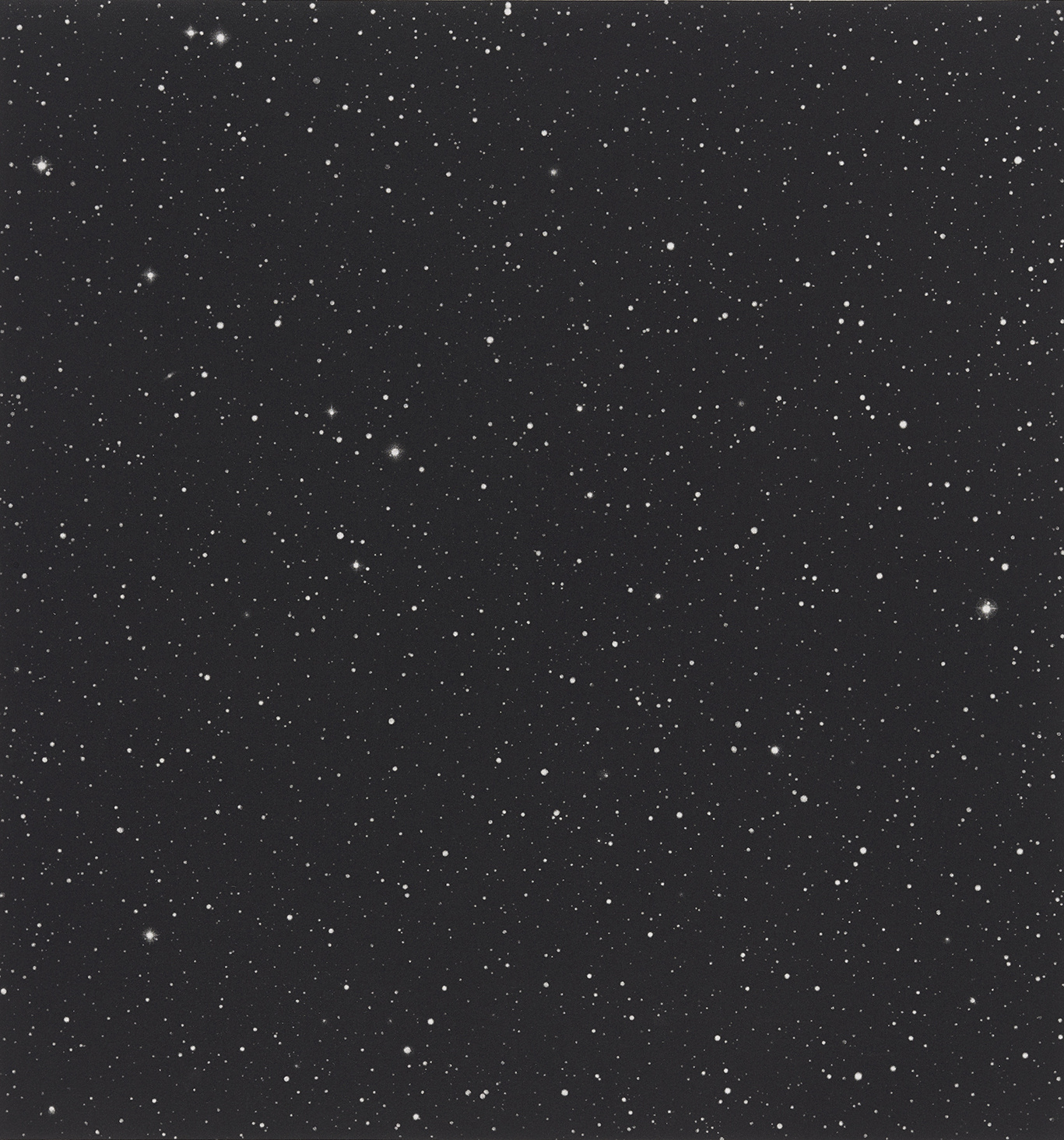In his accounts from the thirteenth century, Marco Polo distinguished the “Region of Obscurity,” the furthest reaches from the known, as lacking stars. Often recorded in travelogues, stargazing has provided a space for reflecting on the limits of perception and knowledge. At the same time, its omnipresence connects us to what is profoundly familiar. Wherever we are, the wide starry sky.
The contradictions of upward observation are found in the work of Vija Celmins, born in Riga, in 1938. Her work is not simply about seeing the night sky. Although she has painted it, meticulously, over and over again since the late-1960s when she was living in Southern California, along with other rich textures and terrains found in the natural world, like the scrubby desert floor, the feathery skin of the calm ocean, and the chalky and porous surface of a seashell. Rather, Celmins’s depictions of nature are about the struggle to see the painted image for itself, as something made, something that sits in the world. Her continuous cycling through the same images, many based on photographs she collects from magazines, insistently repeating them for over five decades, importantly reiterates this position.
Celmins’s images are not a portal into another realm, even though I still want to fall into her work. She kicks me out when I sink too far, when my assumptions about how to look at an image collide with the sheer density of her work. Hers is a formal dedication resilient to emotional projection that she carries out through very physical maneuvers. Consider, for example, the encryption of her brushwork, the unwavering precision of her graphite lines, and the marks of her thin needle on the etching plate, as well as her tight and concentrated scale that invites close inspection. These qualities operate, she says, like a small, heavy rock. They turn an image of hers into a thing, on the wall, in space; it is with me now.
Although she chooses to work with allover images that should go on indefinitely, the compositional stability of the painting contains and holds the infinite in its hard and still surface. It folds inward. Sentimental attachments to and recollections of places and moments, like when someone looks up at the big night sky, searching for what they think they know, remain wanting. Like a journey, they are fleeting. Celmins’s work, in its obdurate presence, is not.
—Michelle White


